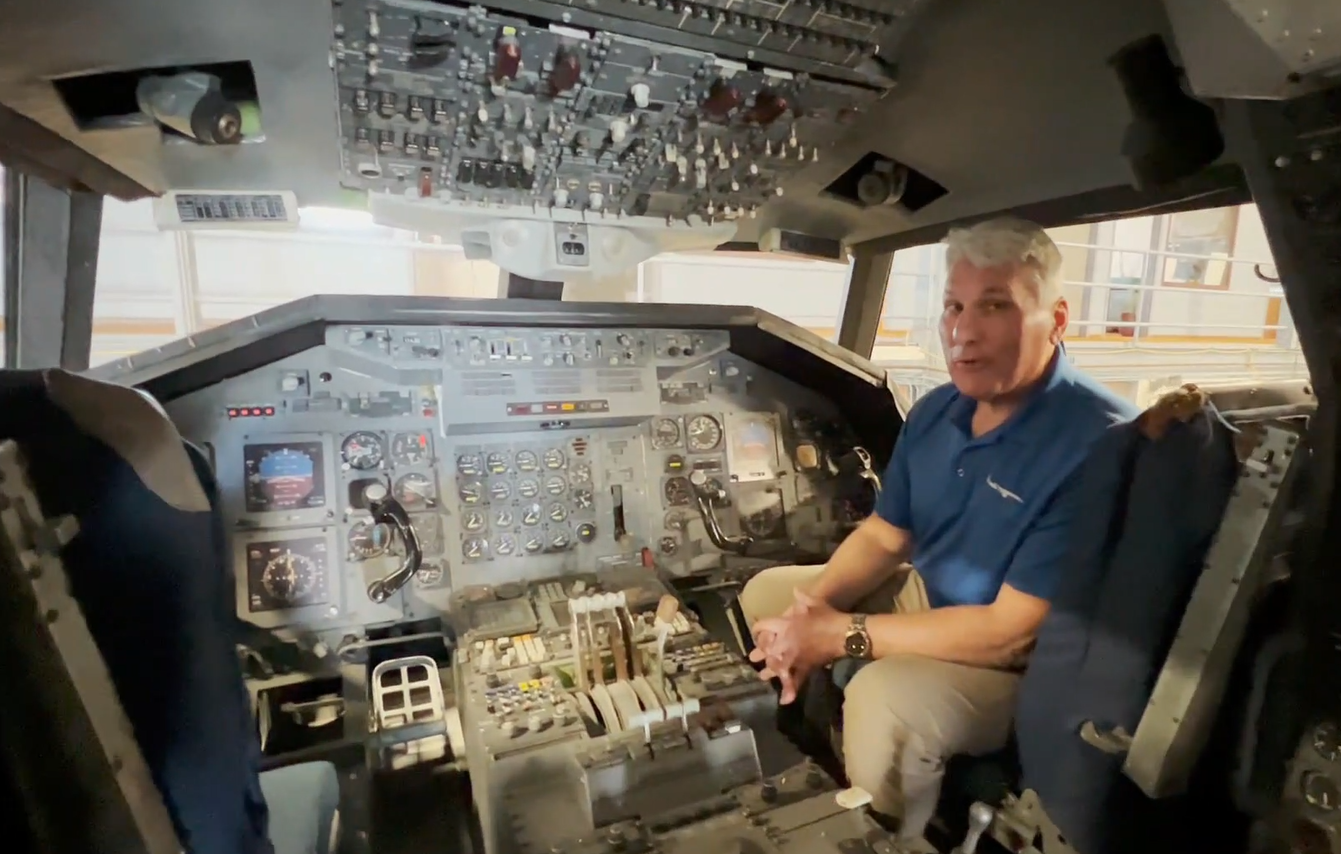We have an exclusive video look inside the Boeing SST Cockpit with Mike Lombardi the company’s corporate historian since 1994.
JOIN: AirlineRatings.com YouTube Channel
GET: Accurate MH370 Information From AirlineRatings.com Newsletter
SEE: GT’s Radar Slams Netflix MH370 Doco
It’s him that probably knows Boeing’s history best, and embraces it, just as it should be for someone in this “dream job”, as he himself calls it. But there was something even Lombardi hadn’t seen for himself until a visit by Airlineratings.com recently.
For the occasion, Lombardi offered a ride in his vintage Mustang to drive from Seattle up to Everett, the site of the biggest Boeing factory, originally built for the 747. Tucked away on the side of Paine Field in a non-descript complex there is a restoration facility of the Museum of Flight, whose main complex is located on the edge of Boeing Field, about 50 km to the south. While the Restoration Center and Reserve Collection has offered public tours for a long time, current staffing shortages prevent it from doing so at this time. This is a pity, as a lot of hidden treasures are housed here, for example, a British de Havilland Comet 4C, the first commercial jetliner.
For ten years, the building has also stored the only remainder of Boeing’s ill-fated SST program, abandoned in 1971: The 27-meter long nose section of the Boeing 2707-300, the last iteration of its attempt to build a Mach 3 airliner seating almost 300 passengers. The movable nose section is stored side-by-side with the cockpit section, having arrived here in 2013 after an odyssey through many parts of the US.
Plans to refurbish and re-assemble it to be exhibited in the main museum campus haven’t come to fruition. When Airlineratings.com visited it became apparent from talking to staff that a concept of what to do exactly with this priceless artefact is still lacking, which is regrettable. The fact that even Lombardi had never seen the remainder of the SST from the inside until doing so with Airlineratings.com speaks for itself.
This so-called Class 3 mock-up is built entirely out of aluminium like a production aircraft. The front section has obviously been severed from the main part of the fuselage, whose whereabouts are unknown after having been dumped in a Florida swamp in 1990. The fuselage structure is empty from the inside, no more installations are visible, while during its heyday in a hangar near Boeing Field in 1969, it was fully furnished with cabin interiors and seats. Miraculously, even for Mike Lombardi, the entire cockpit installation with meticulously built replicas of all instruments and displays is fully preserved and has rarely been seen up close by anyone other than museum staff for a decade.
The three-man cockpit including a flight engineer’s station is surprisingly spacious, compared to the very cramped pilot’s workplace on Concorde with its much narrower fuselage diameter. To enter the SST cockpit, one has to climb into the fuselage via a wooden ladder. One thing is mystifying everyone, however, and there is no easy answer: Unlike its very visible counterpart in Concorde’s instrumentation, there is no indication here as to where the lever would have been to lower the SST’s nose. “It might have been they just inserted some parts of the 747’s instrumentation into this mock-up’s cockpit, so that’s why it might not be installed at all,” one museum staff member tried a theory. Interestingly, Lombardi points out (see videos) that the kind of LCD displays installed in the SST cockpit for the first time in 1969 was actually used as a novelty for the first time in the Boeing YC-14 tactical airlifter study that first flew in 1976.

























